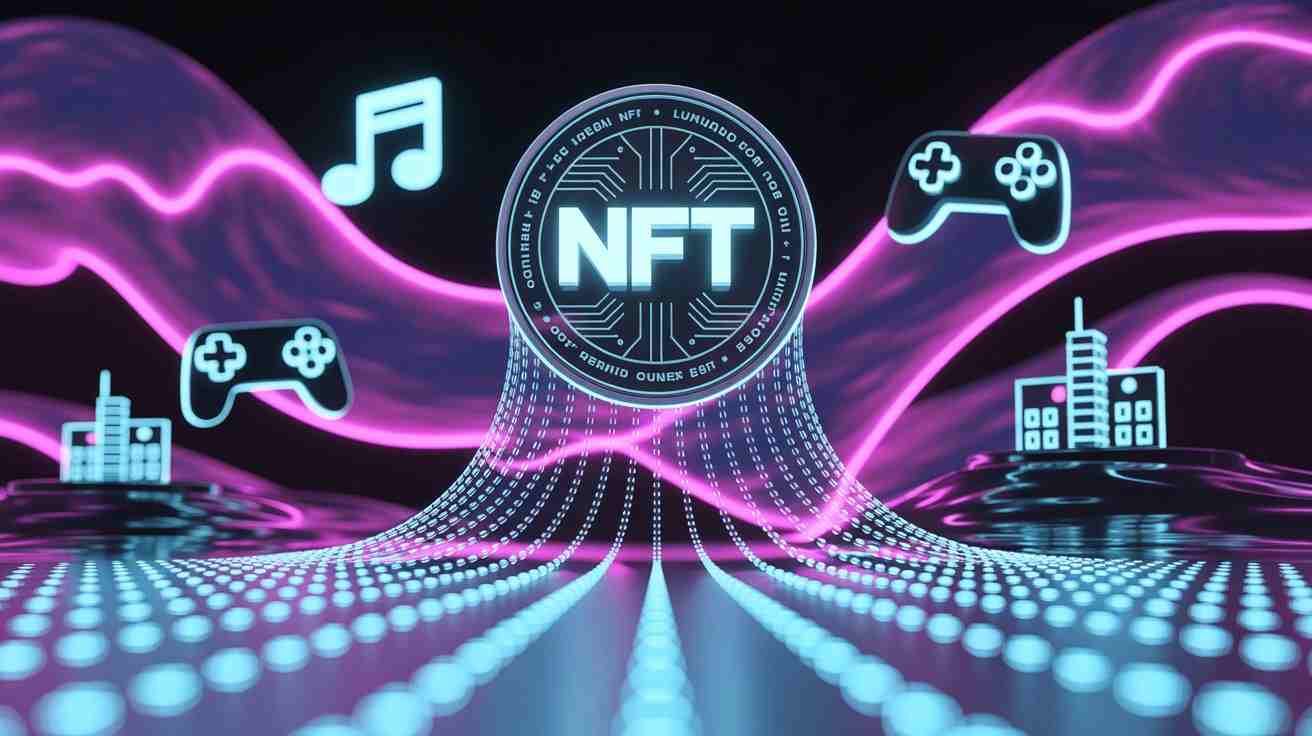Introduction
In today’s rapidly evolving digital world, owning an image, a song, or even a piece of virtual real estate still feels abstract. How can one prove originality when digital files are endlessly copied? Enter NFTs (non-fungible tokens): cryptographic deeds that transform digital files into unique, verifiable property.
Many people misunderstand NFTs as mere speculative art or profile pictures. But the real shift lies deeper: NFTs represent a new paradigm in digital ownership, monetization, and trust. Getting this wrong can lead both creators and collectors into legal, financial, or technological risks. In this guide, we’ll explain why NFTs matter, how they work, and how they’re reshaping industries.
What Are NFTs (Non-Fungible Tokens)?
Fungible vs. Non-Fungible
- Fungible assets (e.g. USD, Bitcoin) are interchangeable: one unit is equivalent to another.
- Non-fungible tokens are unique cryptographic identifiers. Each NFT has metadata and provenance that distinguishes it from any other.
Thus, an NFT acts like a digital deed or certificate, linking a specific digital or physical asset to a distinct token on the blockchain.
Key Components & Architecture
- Smart contracts & standards: On Ethereum, ERC-721 is the canonical non-fungible standard. Each token gets a unique ID, and functions like
ownerOftrack who holds it. - ERC-1155 introduces semi-fungibility: one contract can manage both fungible and non-fungible assets efficiently, useful in gaming or inventory systems.
- Metadata & storage: The blockchain stores token metadata (owner, rules, URI). Large media files (images, video) are stored off-chain (e.g. IPFS, Arweave).
- Provenance: The immutable ledger ensures every transfer is traceable.
This hybrid architecture ensures security for ownership data, while keeping file storage cost-effective.
Why NFTs Are a Strategic Game Changer
NFTs are more than digital collectibles. They underpin several foundational shifts in Web3 and digital economics.
1. Tokenization of Real-World Assets (RWAs)
NFTs allow traditionally illiquid assets—real estate, bonds, art—to be fractionalized and traded. This:
- Introduces liquidity into asset classes that were historically hard to trade.
- Lowers barriers to investment via fractional ownership.
- Enhances transparency thanks to public ledgers.
2. Creator Empowerment & Royalties
Unlike traditional IP models, NFTs can embed automatic, perpetual royalties into smart contracts. Whenever a token is resold, a percentage flows back to the original creator (e.g. 5–15%). This ensures creators benefit from secondary market appreciation.
3. New Use Cases Across Industries
- Music & entertainment: Tokenized albums, limited drops, and royalty-sharing with fans.
- Gaming & Metaverse: NFT-based skins, virtual land, ticketing, and digital identity.
- Fashion & collectibles: Digital wearables and rare drops for virtual avatars.
- Identity & credentials: NFTs as proofs of certification, academic degrees, or credentials.
Risks, Challenges & Regulatory Landscape
Intellectual Property Ambiguity
Buying an NFT usually doesn’t transfer underlying copyright. Unless explicitly licensed, you own the token—not the IP rights. Open licensing (like CC0) complicates commercial use.
Environmental & Energy Concerns
Historically, blockchains using Proof-of-Work consumed high energy. With Ethereum’s shift to Proof-of-Stake, energy usage dropped drastically. However, as NFT transaction volume scales, environmental impact must be monitored.
Regulatory & Classification Uncertainty
Regulators still debate whether NFTs are securities, derivatives, or utility tokens. In the EU, the upcoming MiCAR regulation could classify certain NFTs as financial instruments, especially if they’re fractionalized or tie to revenue rights.
How to Value an NFT
Key Valuation Drivers
- Rarity & trait scarcity — Unique attributes make certain tokens more desirable.
- Project reputation — Credible teams, community, roadmap matter.
- Utility — NFTs with real benefits (access, royalties, metaverse utility) tend to maintain value.
- Liquidity & market dynamics — Higher liquidity boosts confidence.
- Authenticity & provenance — A clear history of ownership is critical.
Comparison Table: NFT Standards
| Standard | Function | Use Cases |
|---|---|---|
| ERC-721 | True non-fungible, one token = one item | Digital art, collectibles |
| ERC-1155 | Hybrid: fungible + non-fungible in one | Gaming inventory, tickets |
| ERC-20 | Pure fungible token | Utility tokens, stablecoins |
FAQs About NFTs
Not automatically. Ownership of the token is separate from copyright. Unless the creator explicitly assigns IP rights, buyers only get the token.
Yes, digital files can be copied. But the token—the unique ledger entry—cannot be duplicated. Ownership is verified on the blockchain.
No. While art was the early driver, NFTs now span gaming, identity verification, real estate, music, and more.
Major NFT marketplaces like OpenSea, Rarible, and Foundation support royalty standards. Always check marketplace policies.
Tips for Creators & Collectors
- Clearly define licensing terms and separate them from token transfer.
- Use decentralized storage for permanence (IPFS, Arweave).
- Pick blockchains or marketplaces with royalty support.
- Monitor wash trading and fake volume with analytics tools.
- Stay updated on regulation—especially securities classification.
- For buyers: always confirm contract metadata, creator authenticity, and community reputation.
Conclusion & Next Steps
NFTs are not a fad—they represent a shift in how we define, exchange, and trust digital ownership. From enabling creator royalties to tokenizing real-world assets, NFTs are expanding the possibilities of Web3. But with opportunity comes responsibility: creators and collectors must stay informed about IP, storage permanence, regulation, and valuation dynamics.
If you enjoyed this guide and found it helpful, please share it, leave a comment with your questions or experience.


thc infused candy discreetly delivered to your door